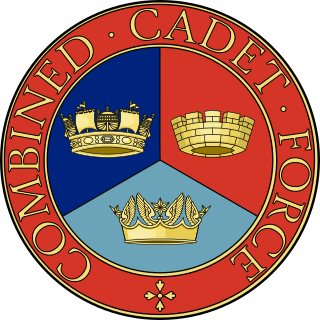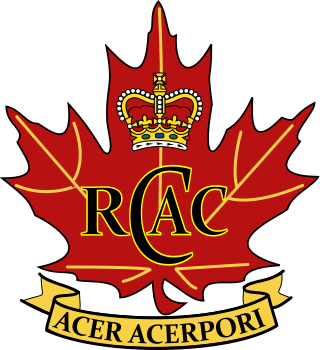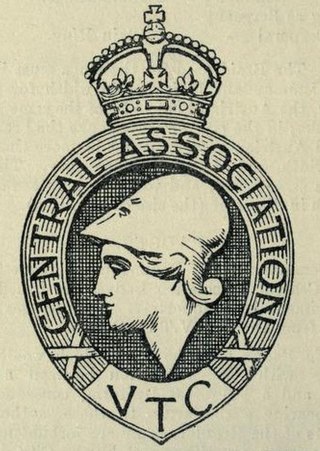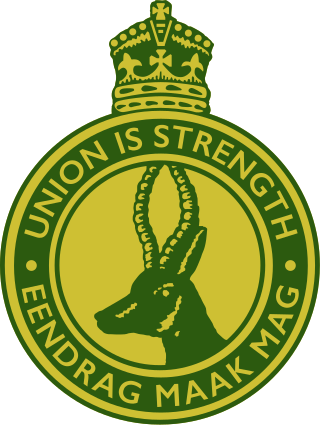
The Women's Land Army (WLA) was a British civilian organisation created in 1917 by the Board of Agriculture during the First World War to bring women into work in agriculture, replacing men called up to the military. Women who worked for the WLA were commonly known as Land Girls. The Land Army placed women with farms that needed workers, the farmers being their employers. The members picked crops and did all the labour to feed the country. Notable members include Joan Quennell, later a Member of Parliament; John Stewart Collis, Irish author and pioneer ecologist; the archaeologist Lily Chitty and the botanist Ethel Thomas. It was disbanded in 1919 but revived in June 1939 under the same name to again organise new workers to replace workers that served in the military during the Second World War.

The Corps of Royal Engineers, usually called the Royal Engineers (RE), and commonly known as the Sappers, is the engineering arm of the British Army. It provides military engineering and other technical support to the British Armed Forces and is headed by the Chief Royal Engineer. The Corps Headquarters and the Royal School of Military Engineering are in Chatham in Kent, England. The corps is divided into several regiments, barracked at various places in the United Kingdom and around the world.

The Irish Army is the land component of the Defence Forces of Ireland. The Irish Army has an active establishment of 7,520, and a reserve establishment of 3,869. Like other components of the Defence Forces, the Irish Army has struggled to maintain strength and as of April 2023 has only 6,322 active personnel, and 1,382 reserve personnel. The Irish Army is organised into two brigades.

The Combined Cadet Force (CCF) is a youth organisation in the United Kingdom, sponsored by the Ministry of Defence (MOD), which operates in schools, sub divided into Royal Navy, Royal Marines, Army and Royal Air Force sections. Its aim is to "provide a disciplined organisation in a school so that pupils may develop powers of leadership by means of training to promote the qualities of responsibility, self reliance, resourcefulness, endurance and perseverance".

The Royal Canadian Army Cadets is a national Canadian youth program sponsored by the Canadian Armed Forces and the civilian Army Cadet League of Canada. Under the authority of the National Defence Act, the program is administered by the Canadian Armed Forces and funded through the Department of National Defence. Additionally, the civilian partner of the Royal Canadian Army Cadets, the Army Cadet League of Canada, also ensures financial, accommodations and transportation support for RCAC programs and services at a community level.

The Royal Military Police (RMP) is the corps of the British Army responsible for the policing of army service personnel, and for providing a military police presence both in the UK and while service personnel are deployed overseas on operations and exercises. Members of the RMP are often known as 'Redcaps' because of the scarlet covers on their peaked caps and scarlet coloured berets.

In the United States (U.S.), a marksmanship badge is a U.S. military badge or a civilian badge which is awarded to personnel upon successful completion of a weapons qualification course or high achievement in an official marksmanship competition. The U.S. Army and the U.S. Marine Corps are the only military services that award marksmanship qualification badges. However, marksmanship medals and/or marksmanship ribbons are awarded by the U.S. Navy, U.S. Coast Guard, and U.S. Air Force for weapons qualifications. For non-military personnel, different U.S. law enforcement organizations and the National Rifle Association (NRA) award marksmanship qualification badges to those involved in law enforcement. Additionally, the Civilian Marksmanship Program (CMP) and the NRA award marksmanship qualification badges to U.S. civilians. Most of these organizations and the U.S. National Guard award marksmanship competition badges to the people they support who succeed in official competitions.

The Reich Labour Service was a major paramilitary organization established in Nazi Germany as an agency to help mitigate the effects of unemployment on the German economy, militarise the workforce and indoctrinate it with Nazi ideology. It was the official state labour service, divided into separate sections for men and women.

The Royal Australian Survey Corps was a Corps of the Australian Army, formed on 1 July 1915 and disbanded on 1 July 1996. As one of the principal military survey units in Australia, the role of the Royal Australian Survey Corps was to provide the maps, aeronautical charts, hydrographical charts and geodetic and control survey data required for land combat operations.

The President's Hundred tab/brassard is a badge awarded by the Civilian Marksmanship Program (CMP) to the 100 top-scoring military and civilian shooters in the President's Pistol and President's Rifle Matches.

Women in World War I were mobilized in unprecedented numbers on all sides. The vast majority of these women were drafted into the civilian work force to replace conscripted men or to work in greatly expanded munitions factories. Thousands served in the military in support roles, and in some countries many saw combat as well.

The Australian Intelligence Corps (AUSTINT) is a corps within the Australian Army. It was formed on 6 December 1907 and provides intelligence personnel in every formation headquarters in the Army. As of 2007, the corps consisted of "169 officers and 232 other ranks".

Catherine Amy Dawson Scott was an English writer, playwright and poet. She is best known as a co-founder of English PEN, one of the world's first non-governmental organisations and among the first international bodies advocating for human rights, and the founding centre of PEN International, a worldwide association of writers. In her later years she became a keen spiritualist.

Women currently make up 19.2% of the ADF workforce. Women have served in Australian armed forces since 1899. Until World War II women were restricted to the Australian Army Nursing Service. This role expanded in 1941–42 when the Royal Australian Navy (RAN), Australian Army and Royal Australian Air Force established female branches in which women took on a range of support roles. While these organisations were disbanded at the end of the war, they were reestablished in 1950 as part of the military's permanent structure. Women were integrated into the services during the late 1970s and early 1980s, but were not allowed to apply for combat roles. In January 2013, serving women were allowed to apply for all positions in the Australian Defence Force (ADF) except special forces which became open to women in January 2014. In January 2016, civilian women became able to direct entry to all positions.

The Volunteer Training Corps was a voluntary home defence reserve force in the United Kingdom during World War I.

The Union Defence Force (UDF) comprised the armed forces of South Africa from 1 July 1912, when the Defence Act took effect, two years after the creation of the Union of South Africa, until 1957 when it was reorganised and renamed the South African Defence Force (SADF).

Women took on many different roles during World War II, including as combatants and workers on the home front. The war involved global conflict on an unprecedented scale; the absolute urgency of mobilizing the entire population made the expansion of the role of women inevitable, although the particular roles varied from country to country. Millions of women of various ages were injured or died as a result of the war.
The Women's Police Service (WPS) in the UK was a national voluntary organization of women police officers that was active from 1914 until 1940. As the first uniformed women's police service in the UK, it made progress in gaining acceptance of women's role in police work.

Louisa Wilkins OBE, also known as Mrs Roland Wilkins was a British writer and agricultural administrator. She was involved in the creation and recruitment for the Women's Land Army during World War One. She was an enthusiast for small holdings and after the war she inspired the creation of a small holding co-operative for women who had entered agriculture during the war.
The forerunner of the Working For Gardeners Association was created in 1899. It has had various names including the Women's Farm and Garden Society (WFGS) and the Women's Farm and Garden Union (WFGU). Its original objective was to improve the employment opportunities for women working on the land. During the First World War, it created the Women's National Land Service Corps (WNLSC) in 1916 and recruited 2,000 volunteers. At the WNLSC's suggestion, the government created the Women's Land Army. In 1920, the WFGU was concerned that after the war, women were not being offered the help that men were. It created a cooperative set of small holdings for women in Surrey. During the Second World War, it organised training. The charity organised training courses for both women and men in 2020 under its new working name of the Working For Gardeners Association.

















